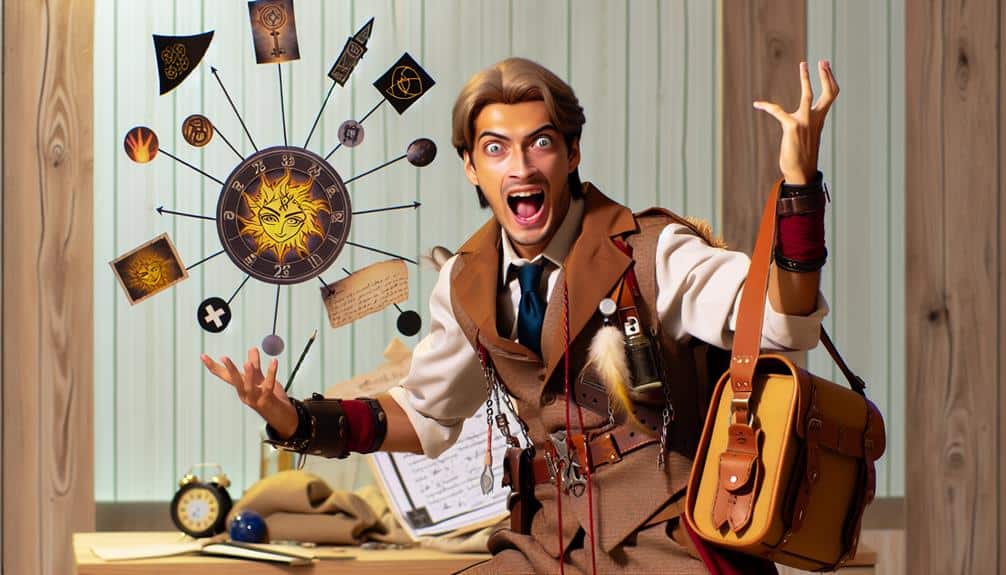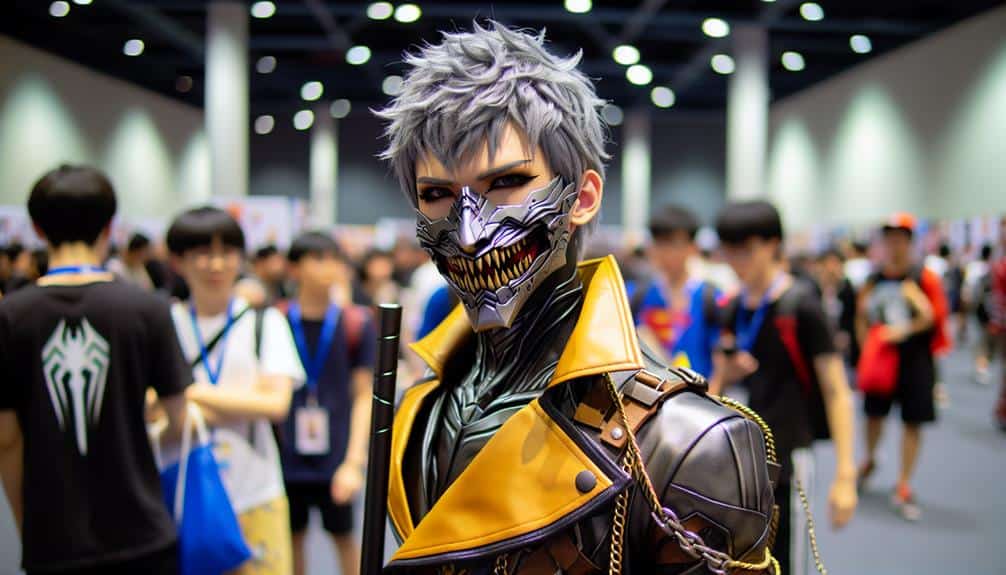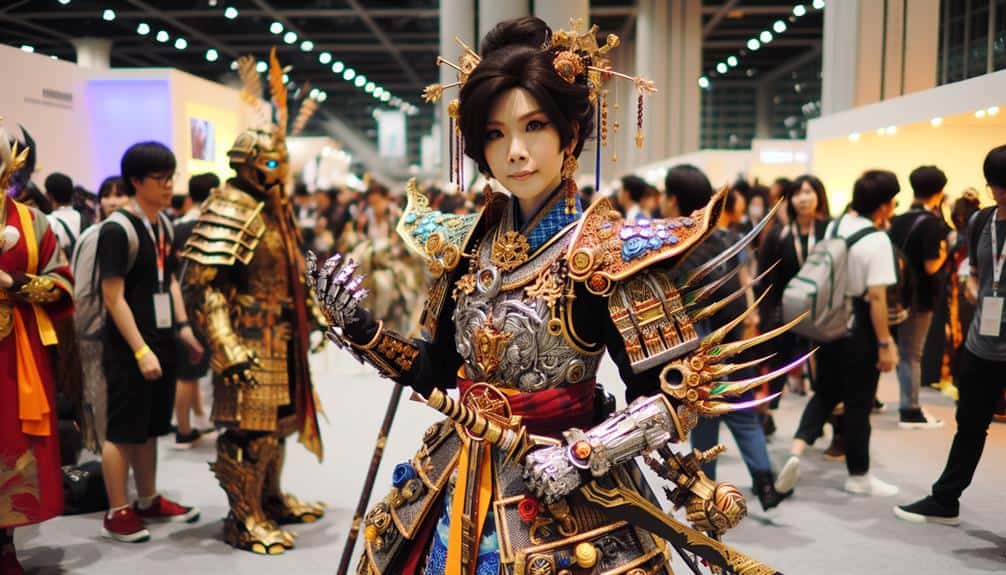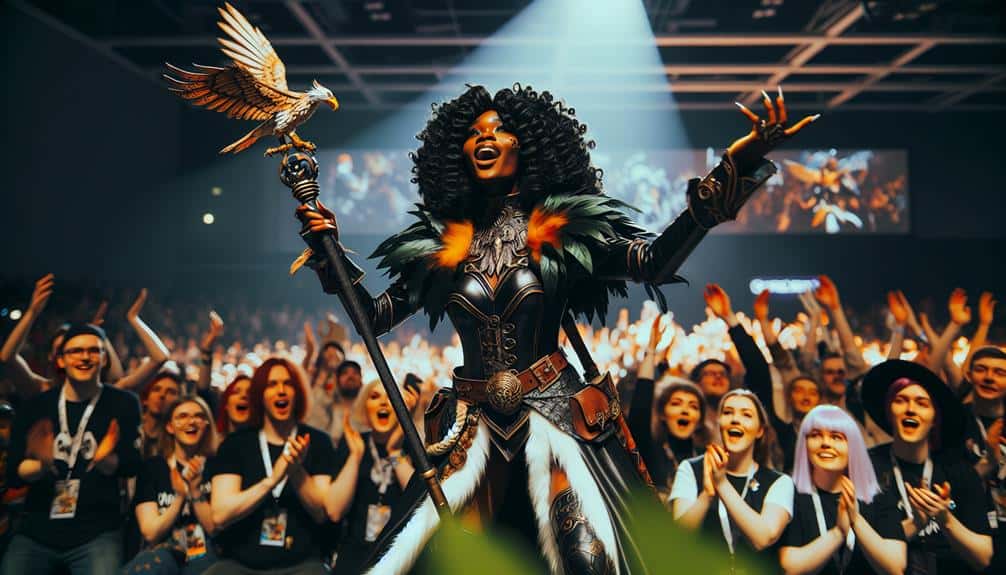Imagine you are a skilled painter meticulously blending colors to create a masterpiece. Just like how each hue contributes to the depth of a painting, understanding the psychological intricacies of a character can elevate your cosplay portrayal to a whole new level.
By delving into the motivations, fears, and desires of the character, you can discover a treasure trove of nuances that will bring your cosplay to life in ways you never imagined.
Key Takeaways
- Understanding character motivations and depth is crucial for authentic portrayal.
- Embody personality traits and behaviors to enhance character believability.
- Enhance emotional expression by delving into character feelings and motivations.
- Utilize body language cues to bring characters to life and deepen performance authenticity.
Importance of Understanding Character Psychology
Understanding the psychology of a character is essential in cosplay as it allows cosplayers to authentically embody the essence and emotions of the character they're portraying. Delving into the character motivations and psychological depth is key to truly bringing a character to life. By comprehending why a character behaves in a certain way, cosplayers can more accurately replicate their mannerisms, expressions, and overall demeanor.
Character motivations play a pivotal role in shaping how a character interacts with their world and the individuals around them. Whether driven by love, revenge, justice, or fear, these motivations provide insight into why a character makes particular choices, leading to a deeper understanding of their psyche. By internalizing these motivations, cosplayers can better convey the character's thought processes and decision-making in their portrayals.
Exploring the psychological depth of a character allows cosplayers to tap into the nuanced emotions that drive their actions. Understanding the complexities of a character's personality, such as their fears, insecurities, or desires, enables cosplayers to convey a more authentic and multi-dimensional portrayal. By embodying the character's psychological depth, cosplayers can evoke a stronger connection with the audience, creating a more immersive and compelling cosplay experience.
Embodying Personality Traits in Cosplay
To authentically bring a character to life in cosplay, embodying their personality traits is a fundamental aspect that adds depth and realism to your portrayal. Personality interpretation plays a vital role in accurately representing a character. Before diving into the physical aspects of cosplay, delving into the psychological depth of the character is essential. Analyzing their traits, behaviors, and motivations will help you understand how they'd react in different situations, allowing you to embody them more convincingly.
When embodying personality traits, pay attention to subtle details that reflect the character's inner world. Whether it's their body language, facial expressions, or tone of voice, these nuances can convey a wealth of information about their personality. By immersing yourself in the character's mindset, you can bring a new level of authenticity to your portrayal.
Enhancing Emotional Expression Through Performance
Enhancing emotional depth in your cosplay performance requires a nuanced understanding of the character's innermost feelings and motivations. To convey emotions effectively, you can utilize various performance techniques. One key method is to focus on micro-expressions, subtle facial movements that reflect underlying emotions. By practicing these expressions in front of a mirror, you can master the art of conveying complex feelings with authenticity.
Furthermore, paying attention to vocal tone and inflection can significantly enhance your emotional portrayal. Adjusting the pitch, speed, and volume of your voice in line with the character's emotions can create a more compelling performance. Additionally, incorporating gestures and body language that align with the character's feelings can further enrich your portrayal.
Utilizing Body Language for Authentic Portrayal
Utilizing body language is an important element in achieving an authentic portrayal of your character in cosplay performances. Body language cues and nonverbal communication play a significant role in bringing your character to life. Here are three key points to take into account when incorporating body language into your cosplay performance:
- Posture: Pay attention to your character's posture as it can convey a lot about their personality. A confident character may stand tall with open body language, while a more timid character might've closed-off or slouched posture.
- Gestures: Use gestures that are in line with your character's traits and emotions. For instance, expansive gestures can indicate enthusiasm or authority, while fidgeting or small gestures may convey nervousness or insecurity.
- Facial Expressions: Your character's facial expressions are vital for portraying emotions effectively. Practice a range of expressions that align with your character's backstory and motivations to enhance the overall performance.
Connecting With the Character's Motivations
Exploring the character's motivations in depth can greatly elevate your cosplay performance by adding layers of authenticity and emotional depth to your portrayal. By delving into the reasons behind a character's actions, you can better understand their behavior and make more informed choices in how you embody them. Character motivations provide insight into their desires, fears, and values, allowing you to portray them with a psychological depth that resonates with your audience.
To connect with a character's motivations, consider their backstory, relationships, and personal goals. Think about what drives them, what challenges they face, and how they respond to adversity. By internalizing these aspects of the character, you can bring a sense of realism and nuance to your cosplay. Understanding the psychological underpinnings of a character's motivations enables you to communicate their inner world through your performance, creating a more engaging and authentic portrayal.
Incorporating character motivations into your cosplay not only enriches your interpretation but also enhances your connection to the character. It allows you to inhabit their mindset, conveying a deeper understanding and appreciation for the role you're embodying. By immersing yourself in the character's motivations, you can elevate your portrayal to a new level of complexity and emotional resonance.
Frequently Asked Questions
Can Cosplay Really Help Individuals Better Understand Themselves and Their Own Emotions?
Sure, you might think cosplay is just about dressing up, but surprise! It's a mirror. Through self-reflection and emotional exploration, stepping into characters' shoes can reveal layers of yourself you never knew existed.
How Do Cosplayers Ensure They Accurately Portray a Character's Psychology Without Relying on Stereotypes?
To explore accurate character portrayal without stereotypes, guarantee into character analysis. Investigate psychological depth beyond surface traits. Connect with the character's emotions, motivations, and backstory. Embody their complexities authentically for a more genuine portrayal.
Are There Specific Ways to Incorporate Psychological Theories or Concepts Into Cosplay Performances?
You can bring psychological depth to your character performance by delving into theories like attachment styles or personality traits. This exploration will help you embody emotional authenticity in your cosplay portrayal, creating a more compelling and nuanced performance.
Can Cosplayers Use Body Language to Convey a Character's Internal Thoughts or Emotions Effectively?
Use nonverbal cues like posture, gestures, and facial expressions to convey a character's emotions effectively. By embodying psychological depth in your performance through body language, you can enhance the authenticity of your portrayal.
How Can Cosplayers Connect With a Character's Motivations if They Come From a Different Cultural or Historical Background?
To connect with a character's motivations despite cultural differences, focus on the universal themes of their story. Approach with historical empathy, understanding the context that shaped them. Cross cultural connections can be forged by delving deep into the character's psyche.



